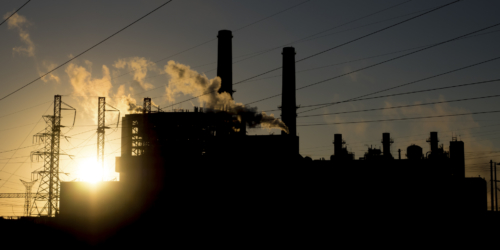Notes on the EPA’s Clean Power Plan (Part 3: The Electricity Industry’s Failures)
Bill Gates argues that if Thomas Edison came back today he would be very unimpressed by our electricity-sector advances.
Gates makes his case in a notable Atlantic interview published a few weeks ago. Edison would be totally familiar with how modern coal plants work—the concepts and the machine have changed very little in over 100 years. It’s an observation that echoes what Jeffrey Immelt, the CEO of General Electric, said awhile back in noting that coal industry, which is where he started, hadn’t innovated significantly in 50 years.
Both Gates and Immelt point to the rise and the success of innovation across a multitude of other industries: computers, communications, medical technology and so on.
Gates points out that the energy industry is an innovation laggard because traditional energy markets change slowly, historically speaking, too slowly to effectively address climate issues. Industry executives, as a result, aren’t used to thinking innovatively and don’t know how to do it. So the markets are doing it for them now, moving apace with coal in steep structural decline and oil and gas stumbling.
Steeped as he is in innovation, Gates knows that most investments in innovation fail during the initial stage of development. And as a hardened business guy he knows that no one is making a killing in the renewable-energy arena right now—a fact that for the time being tempers enthusiasm. Gates also knows that the private sector on its own cannot finance the level of innovation required to create a true sea change across the energy sector and that the public sector is at best a bumbling mess. But that’s where he starts, those are the tools and it’s up to us to sharpen them.
Immelt expresses a similar mindset, and to me, both Gates and Immelt, see initiatives like the EPA’s Clean Power Plan—which is forcing the utility industry to modernize—as imperfect slouches in the right direction. Energy markets create value at the nexus of the private and public sector, which is why we have regulated utilities in the U.S. Electricity is a basic necessity and the vicissitudes of the market offer too many ups and downs for us to treat it any different.
It’s disturbing but not surprising, that none of the filings in the litigation around the Clean Power Plant acknowledge the truths people like Gates and Immelt recognize.
Washington’s reaction to innovation has included roundly and repeatedly condemning the $535 million in losses at Solyndra as evidence of what critics painted as a wholesale failure of technology and the hopelessness of renewable-energy development. Renewables, by this anachronistic way of thinking, can never be a solvent, stable source of electricity and profits.
Washington doesn’t have a very good memory, a dangerous shortcoming for any democracy. In the late 1990s the GAO published a series of reports (here’s one) that showed how the Rural Utility Service had written off losses of over $1.6 billion in coal plants (that would be almost $3 billion today). If you throw in losses tied to nuclear plants the numbers only mount.
Coal-fired electricity industry write-offs—costly failures by any yardstick are especially egregious because the industry has had a century to innovate and improve and has barely bothered to try.
The main innovation, such as it is, in coal-fired generation today can be seen at three locales, the Edwardsport Power Station in Indiana, the Kemper County Energy Facility in Mississippi, and the Prairie State Energy Campus in Illinois. IEEFA has studied each of these three plants closely and has published research and testified before administrative tribunals on two of them. All of them are financial disasters as cost overruns and ensuing operational cost burdens are passed off on ratepayers, taxpayers and shareholders. The damage runs into the billions of dollars, and each of these plants is a 30-year liability at least.
Each is also a painful example of how we have done a poor job of funding energy-sector innovation.
Tom Sanzillo is IEEFA’s director of finance.
Related posts in this series:
Notes on the EPA’s Clean Power Plan (Part 1: It’s Not ‘About’ Coal)
Notes on the EPA’s Clean Power Plan (Part 2: A Negligent Industry)
















